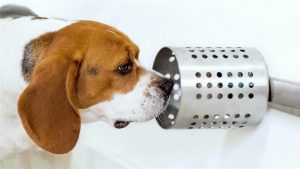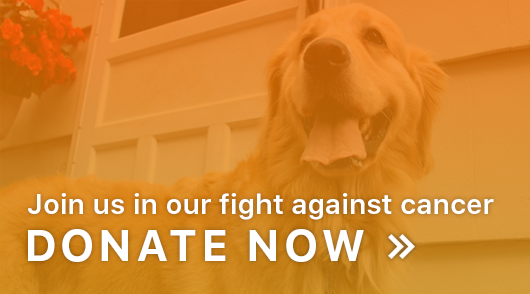
Dog sniffing out cancer.
Cancer Sniffing Canines
From Science Blog – Cancer Reesearch UK
A trio of beagles made headlines this week, as the dogs were trained to ‘sniff out cancer’ with remarkable accuracy, according to a press release. Our canine companions have smell receptors 10,000 times more accurate than ours, which has led to some interest in their ability to detect cancer and other conditions by using their keen sense of smell to detect smelly molecules given off by faulty cells. In lab tests, the dogs were trained to pick out samples from patients with lung cancer that had spread to other parts of the body, which they did 96.7% of the time. It’s unlikely that research like this will result in a dog in every GP practice, but the ideas behind the research are already being exploited to develop a reliable and reproducible test to detect cancer early. You can read more about one example of this in our blog post about a breath test clinical trial.
Dogs trained to sniff out cancer with 97% success
From Metro
DOGS can sniff out early signs of cancer in humans with nearly 97 per cent accuracy, a study has shown.
Their highly evolved smell receptors — which are 10,000 times more accurate than those of humans — make dogs sensitive to odours we can’t perceive.
And researchers say harnessing the animals’ ability to detect blood from people with cancer ‘could potentially save thousands of lives’.
Findings presented to US scientists yesterday showed how three beagles were trained to sniff out malignant lung cancer in samples from patients.
Heather Junqueira, study leader at research and development firm BioScent Dx in Florida said dogs could soon be part of cancer-screening programmes that are as accurate but less invasive than methods currently used.
‘Although there is currently no cure for cancer, early detection offers the best hope of survival,’ she said. ‘A highly sensitive test for detecting cancer could change the way the disease is treated.
‘It is very exciting as it paves the way for further research which could lead to new cancer-detection tools.’
Ms Junqueira’s team used a form of clicker training to teach the beagles to distinguish between normal blood and samples from lung cancer patients.
The dogs correctly identified cancer samples 96.7 per cent of the time and normal samples with a 97.5 per cent success rate — indicating that canine scent detection can be used to develop a non-invasive way of screening.
The study was presented at the annual meeting of the American Society for Biochemistry and Molecular Biology in Orlando.








